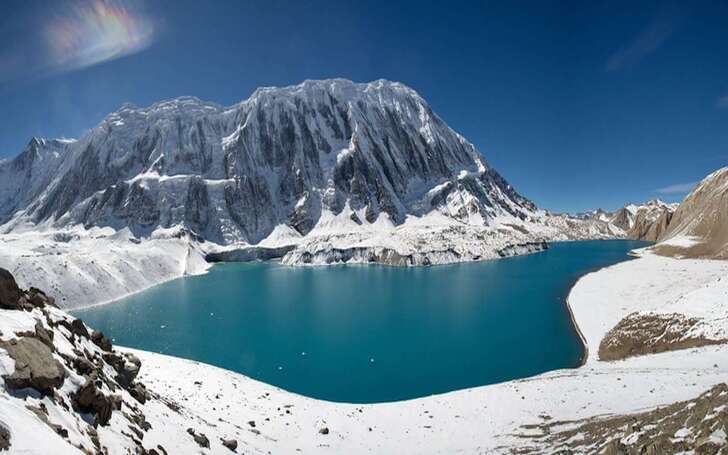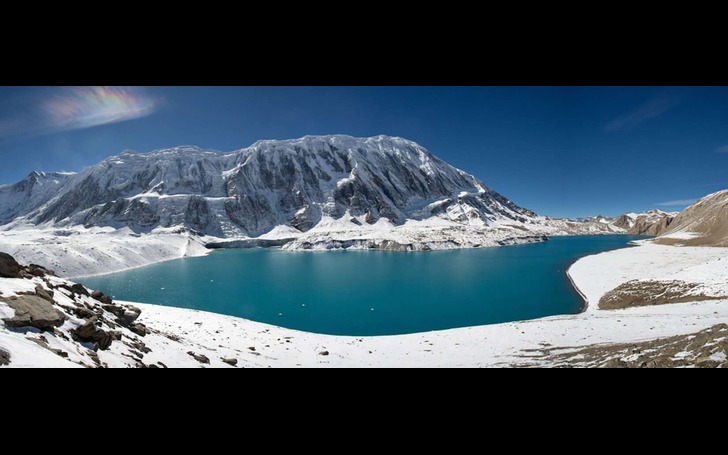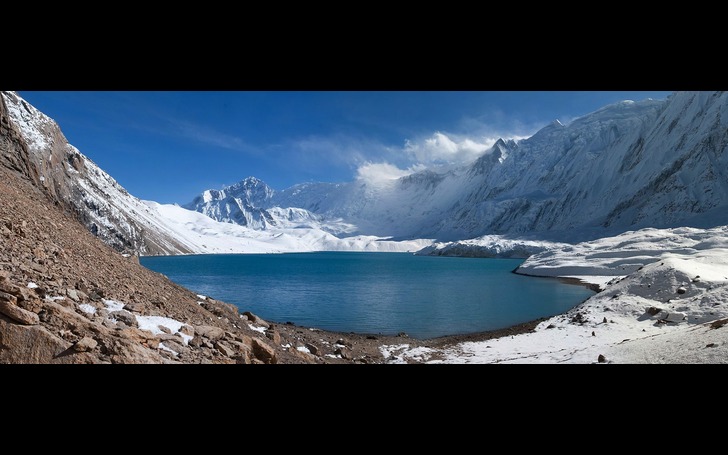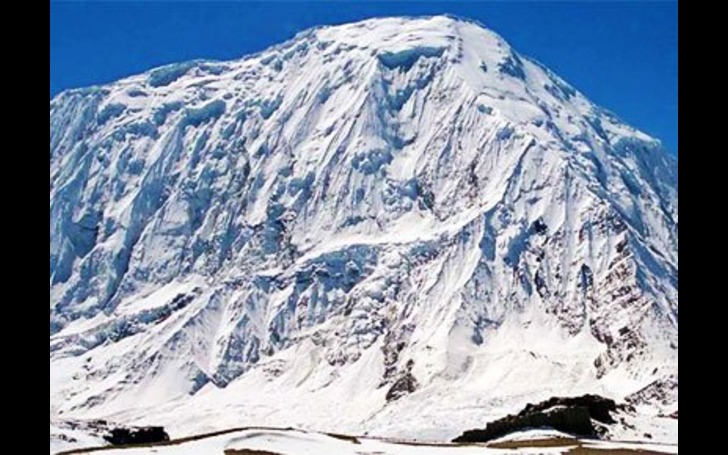- info@destinationholidaytrek.com
- +977-9768913779
- Gokarneshwor-6, Arubari, Kathmandu, Nepal
Tilicho Expedition (7,134m)
| Destination: | Nepal |
| Maximum Altitude: | 7,134 meters |
| Best Season: | Autumn & Winter |
| Trip Grade: | Moderate |
| Group Size: | 1 – 15 people |
| Duration: | 36 Days |
The Tilicho Peak Expedition is one of the most captivating and challenging 7000m climbs in the Annapurna region. This adventure begins with a scenic trek along the Annapurna Circuit and culminates at the awe-inspiring Tilicho Lake, which is situated at an altitude of 4910m and holds the distinction of being the highest lake in the world.
Located approximately 210 km west of Kathmandu in the Manang District, this breathtaking location is guaranteed to leave visitors speechless. Tilicho Peak is the tallest point of the Great Barrier, which connects Khangsar Kang (7458m) and Nilgiri North (7061m).
Why The Tilicho Expedition Is Famous?
The summit of Tilicho Peak offers unparalleled views of Tilicho Lake (4920m), whose vibrant aqua-blue waters lie at the base of the peak. This lake is the highest in the world. From the summit, climbers can take in the vast expanses of the Annapurna and Dhaulagiri massifs and gaze down at the Kali Gandaki Gorge, the world’s deepest gorge.

Tilicho Peak is technically demanding, with the standard route along the northwest shoulder consisting of a mix of rock, ice, and steep snowfields. Despite the technical challenges, the peak presents little objective danger due to the wide expanse of the shoulder. The summit rewards climbers with breathtaking panoramic views.
Situated to the north of Manang in the Annapurna region, Tilicho Peak rises to an impressive 7134m. Its snow-clad northeast ridge dominates the landscape, overlooking the high Kali Gandaki Valley to the west and the Marshyangdi Valley to the east. Nearby lies the mysterious region of Mustang to the north. The primary climbing route follows the northwest shoulder, with the Base Camp (4800m) positioned at the lake’s northwest edge.
With fewer climbers venturing into the Annapurna mountain range, adventurers can immerse themselves in the majestic landscapes in near solitude. The summit of Tilicho Peak offers awe-inspiring views of the Annapurna and Dhaulagiri ranges, including peaks like Lamjung Himal (6932m), Annapurna IV (7525m), Annapurna III (7555m), Annapurna II (7939m), Gangapurna (7454m), and several other majestic snow-capped mountains.
Trail Highlights
The journey begins at Dharapani, along the Annapurna trekking route, and takes travelers through vibrant Tibetan Buddhist villages. These villages are rich in culture and adorned with religious symbols such as prayer flags, chortens (engraved stones), and gompas (monasteries). Along the way, trekkers will marvel at the stunning scenery and the unique Tibetan-style architecture.

The trek also includes sacred sites such as Muktinath, known for its 108 bull-shaped water spouts, which hold spiritual significance for both Buddhists and Hindus. The route transitions from subtropical landscapes in the lower regions to more arid, rugged terrain at higher altitudes, such as Manang, which experiences a colder, dry climate due to its elevation.
The crown jewel of this trek is undoubtedly the striking turquoise waters of Tilicho Lake and the towering Annapurna ranges that surround it.
Climbing Prerequisites
Climbing Tilicho Peak requires prior experience with high-altitude expeditions, including successful summits of at least one 6000m peak and familiarity with technical mountaineering. While this experience does not necessarily need to be in Nepal, prior exposure to the local climbing culture and techniques is highly beneficial. Climbers will also gain valuable insights into the perspectives and expertise of local Sherpa leaders.
Custom Itinerary Options
If you prefer a shorter expedition, the Destination Holiday team can arrange an express itinerary, reducing the trip to 24–25 days.
Highlights of the Tilicho Peak Expedition
– A technically demanding and rewarding 7000m climb
– Scenic location by Tilicho Lake, the world’s highest lake
– Fewer climbers, offering a more secluded experience
– Rich cultural encounters in remote villages resembling Tibetan traditions
– Opportunities to test and refine high-altitude climbing skills
– Expert guidance from experienced Sherpa climbing guides
– Well-organized camps and logistics
Route Overview
Tilicho Peak (7134m/23,406ft) is one of the most technically challenging 7000m climbs. The journey follows the classic Annapurna Circuit trekking route to Manang village before heading toward Tilicho Lake via Khangsar and Besi Khola. From the Base Camp, climbers ascend to High Camp I (5800m/19,029ft), located below the northwest shoulder on a steep 45-degree section of mixed rock and ice terrain.

Camp II (6100m/20,013ft) lies further up the northwest shoulder, accessed via a 50-degree, 500m-long snowfield. The shoulder itself, stretching 700m at a 50-degree incline, presents minimal objective hazards due to its width. Climbers will use fixed ropes for sections approaching Camp II (6300m/20,669ft).
The standard route to the Advanced Base Camp begins in Besishahar and follows the Marsyangdi Valley. This approach, taking approximately eight days, allows for excellent acclimatization. After summiting Tilicho Peak, there are two options to return to Kathmandu. One involves crossing the Thorong La Pass (5416m/17,769ft), followed by a flight from Jomsom to Pokhara. The other option is to traverse the more challenging Mesokanto Pass (5300m) before flying from Jomsom to Pokhara.
At the summit, climbers are rewarded with breathtaking views of the Annapurna massif, Dhaulagiri, Tilicho Lake, the Tibetan Plateau, and the Kali Gandaki Valley, the deepest gorge in the world.
The base camp, located at 4800m/15,748ft, lies at the foot of Tilicho Peak, which rises 2300m above the picturesque Tilicho Lake. Climbers ascend from the base camp to Camp I, traverse a 45-degree section of mixed rock and ice, and then continue to Camp II along a 50-degree snowfield. The final summit push involves climbing a 50-60 degree, 750-850m snowfield along the wide northwest shoulder, ensuring minimal exposure.
With guidance from the expert Satori Climbing Sherpa team, climbers ascend to Camp I, Camp II, and ultimately to the summit for a truly unforgettable mountaineering experience.
Included
- All arrival and departure transfer services to and from KTM international airport with other necessary transport as per itinerary
- Assistance at KTM international airport by Sherpa Expedition and Trekking during your arrival and departure.
- 4-night hotel accommodation in Kathmandu on B/B basis
- One night hotel accommodation in Pokhara. B/B plan
- Experienced and government licensed trekking and climbing Sherpa guide during the trekking and climbing period
- The appropriate number of porters during the trekking period
- Land transportation from Kathmandu-Beshisahar and Pokhara to Kathmandu for all climbing members, Sherpa guide, liaison officer and kitchen staff
- Common climbing equipment such as Rope, ice bars, ice screws, and snow bar
- 3 meals a day: Breakfast, lunch, and dinner with tea/coffee
- Accommodation at hotel/lodge/guest house or tent camps during the trekking/climbing period
- All camping accommodation for members and staff during the trekking and climbing period. You will be sharing sleeping quarters with one other member
- All food and fuel for base camp and higher camps during the climbing period
- 50kg baggage allowance per person during the trekking period. This will be carried by porters/mules
- Daily weather report services from Seattle, the Washington based company
- Services of chef and kitchen assistant at advance base camp
- Trekking Permit (Annapurna Conservation Park entry fee)
- TIMS card (Trekking Information Management System)
- Expedition Royalty and permit of Nepal government to climb Mt.Tilicho Peak
- Nepalese Government Royalty
- One experienced, trained, government licensed and 3-time summiteer climbing guide (Sherpa) per person
- All wages, equipment, medical and accident insurances for all involved staffs during the trekking and climbing period
- Helicopter rescue insurance for all involved expedition staff
- Medical consultation services at the base camp with the HRA clinic at base camp
- Equipment allowances and wages for climbing Sherpas, cooks, kitchen assistant and government liaison officer
- First aid medical kits for the group and the staff
- Satellite phone carried by guide for communication. Available to clients at a cost of $3USD per minute
- Appropriate high altitude food for all clients and staff at base camp and above as required
- Required fixed and dynamic rope during the climbing period
- Emergency oxygen mask and regulator provided upon request of the client with requirement appropriate charge
- Solar panel for light and electronics charging
- All tents for camp 1, 2 and 3. Icefall charges
- Gamow Bags (Portable hyperbaric chambers) for high altitude sickness
- 2 Bottles (8L) of Poisk Oxygen will be provided for each member
- The latest model of Summit or Top out system mask and regulators will be provided
- We provide Sherpa’s tents, food for climbing and insurance
- Free assistance service for cargo clearance and duties
- EPI cooking gas and stove will be provided in camp one, three and South Col for cooking food
- The generator will be providing to back-up the lighting in base camp
- Transportation of food supply from Kathmandu to base camp by porter/mules
- Our service charge and government taxes levied in Nepal
- Complete pre-departure information
- Flight ticket re-confirmation and visa extension procedure services
- Farewell dinner in a typical Nepali restaurant with cultural show in Kathmandu before departure
- Sherpa Expedition and Trekking t-shirt and scarf
Excluded
- Lunch and dinner during your stay in Kathmandu (except for the farewell dinner).
- Any packed food/snacks, aerated drinks, energy drinks, mineral water, alcohol, cigarettes,
- chocolates, or any other food consumed beyond the prescribed breakfast, lunch and dinner.
- Expenses incurred towards usage of landlines, mobiles, walkie-talkies, satellite phones, and internet expenses.
- Clothing, packing items or bags, personal medical kit, personal trekking gear.
- Any extra expenses arising out of various/unforeseen situations like natural
calamities, landslides, political disturbances, strikes, changes in government regulations, etc. - Transportation services include only what is listed on the itinerary. Any extra distance traveled will be appropriately charged.
- Any additional staff other than specified.
- Rescue, repatriation, medicines, medical tests and hospitalization expenses.
- Medical insurance and emergency rescue evacuation if required.
- Travel insurance and helicopter rescue.
- Walkie-talkies
- Filming permit (if you have a special camera).
- Personal climbing gear.
- Nepal custom duty for import of expedition equipment.
- Items of personal nature, laundry expenses, tips.
- Tips, gifts, souvenirs.
- Airfare of international flights.
- Nepal entry visa fee (Visa is easy on arrival).
- Any extra services, products, offers or activities which are not mentioned in the itinerary.
- Any other item not included in the cost includes section.
Itinerary
The itinerary to Tilicho Peak Expedition as follows:
01
Day 1 : Arrival in Kathmandu and transfer to hotel.
02
Day 2 : Half day Kathmandu Valley Sightseeing and preparation for Expedition
03
Day 3 : Drive to Besisahar (823m)
04
Day 4 : Drive to Dharapani (1860m)
05
Day 5 : Trek to Chame (2670m)
06
Day 6 : Trek to Pisang (3100m)
07
Day 7 : Trek to Manang (3440m)
08
Day 8 : Rest day at Manang for acclimatization.
09
Day 9 : Trek to Khangsar (3734m)
010
Day 10 : Trek from Khangsar to Besi Khola(3955m)
011
Day 11 : Trek fromBesi Khola to Tilicho Peak Base Camp (4150m), camp.
012
Day 12 : Day 12 – 28: Climbing period; Tilicho Summit (7135m)
013
Day 29 : Pack up and preparation for returning.
014
Day 30 : Trek f to Khangsar, lodge.
015
Day 31 : Trek from Manang to Pisang, lodge.
016
Day 32 : Trek from Pisang to Chame, lodge.
017
Day 33 : Drive to Besisahar, lodge.
018
Day 34 : Drive from Besisahar to Kathmandu, hotel.
019
Day 35 : Leisure day in Kathmandu.
020
